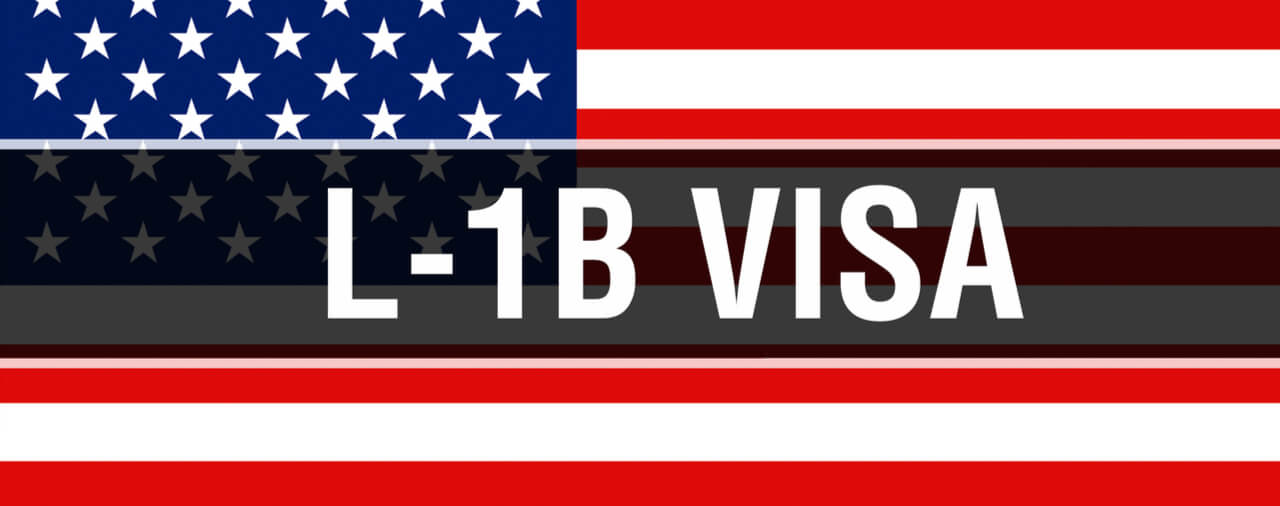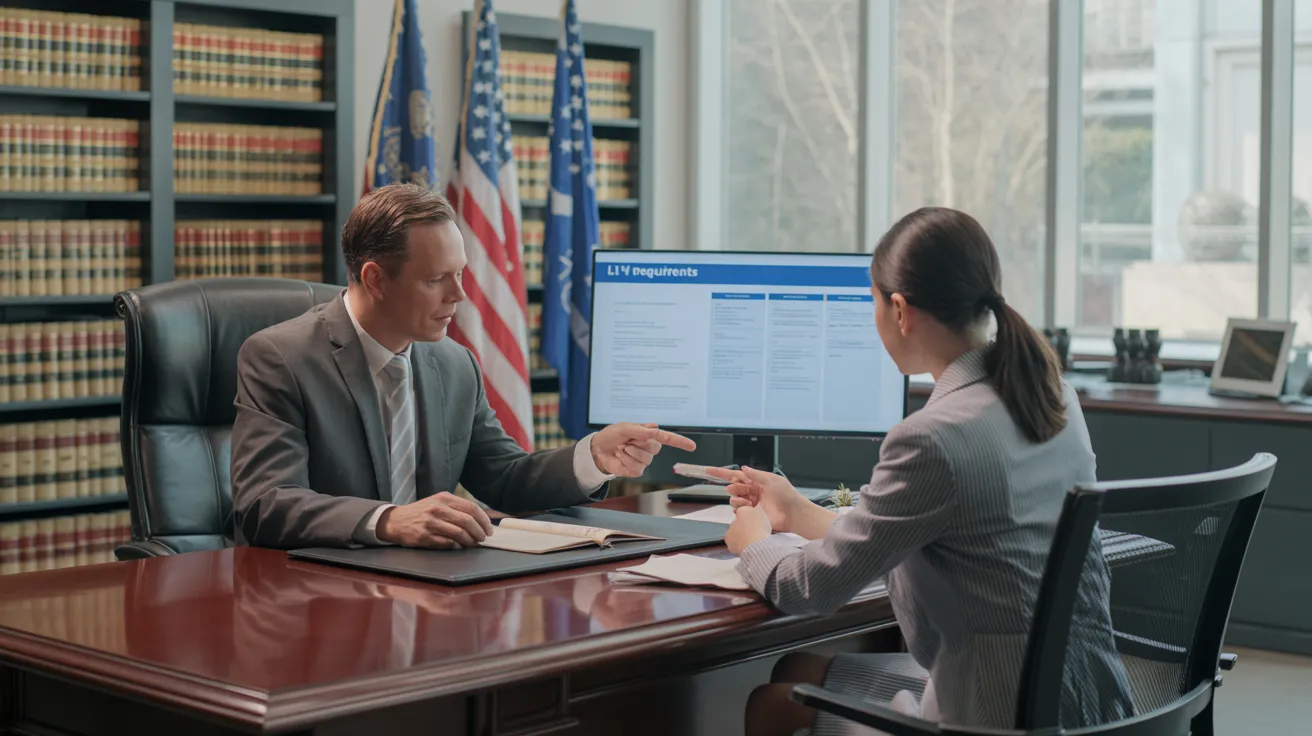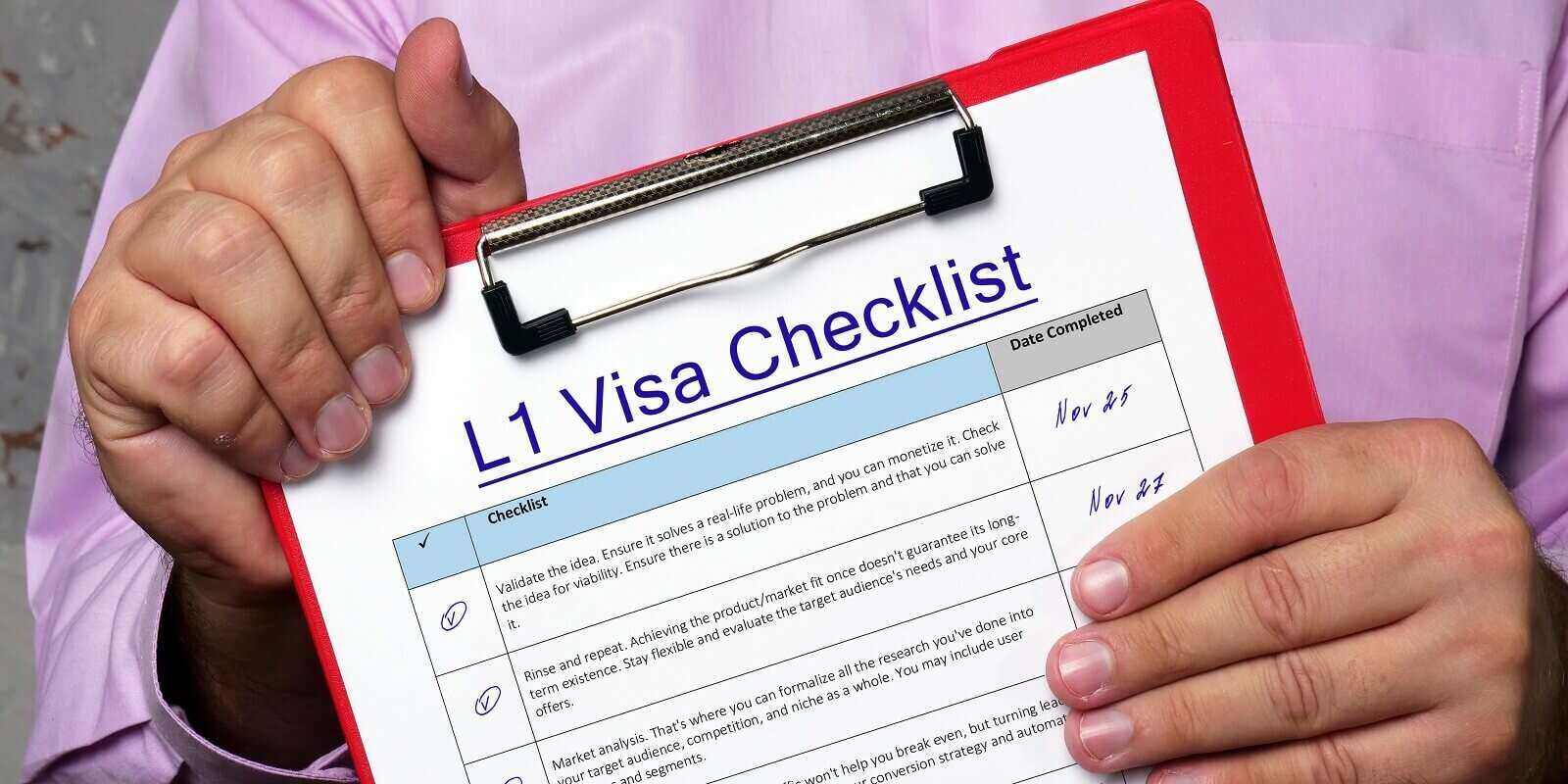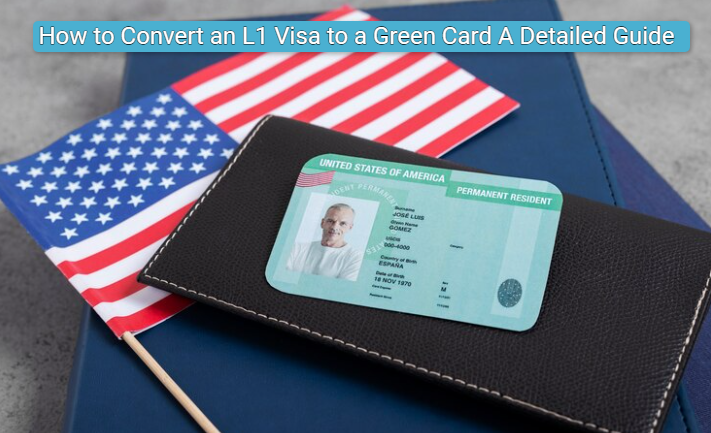Opening Opportunities: A Comprehensive Guide to the L1 Visa Process
The L1 visa process provides a vital pathway for multinational firms looking for to move key staff members throughout boundaries. Understanding the subtleties of eligibility standards, the distinctions in between L-1A and L-1B visas, and the complexities of the application procedure can greatly affect an applicant's success. Steering this complex landscape is not without its obstacles, and careful attention to paperwork and employer sponsorship is essential. As we discover the vital parts of this process, the approaches for getting rid of possible barriers will become evident, revealing how informed preparation can open a globe of chances.
Comprehending the L1 Visa
Recognizing the L1 visa entails identifying its importance as a crucial device for multinational companies seeking to move skilled staff members between international workplaces. This non-immigrant visa classification helps with the movement of execs, managers, and specialized knowledge workers to the USA, consequently enabling companies to keep operational connection and harness global talent effectively. The L1 visa is split into two primary categories: L-1A for supervisors and executives, and L-1B for workers having specialized knowledge.The L1 visa offers a critical duty in boosting a business's affordable side in the global marketplace - L1 Visa Requirements. By permitting business to transfer their key employees, businesses can guarantee that critical projects are handled by certified people who are currently acquainted with the company's culture and functional processes. This interior transfer system not only fosters expertise sharing but also promotes advancement and collaboration across borders.Moreover, the L1 visa is frequently favored for its reasonably simple application process compared to other visa categories, as it enables twin intent, allowing holders to go after long-term residency while on a short-lived job visa. This function makes the L1 visa particularly appealing for both employers and employees, as it simplifies the path for competent specialists to establish long-term residency in the United States
Eligibility Requirements
Eligibility for the L1 visa rests on numerous crucial criteria that guarantee both the staff member and the employer fulfill particular certifications. This non-immigrant visa is created for international firms to move staff members from consular services to U.S. counterparts.Firstly, the company needs to be a qualifying company, that includes a parent business, branch, affiliate, or subsidiary of a united state service. The company has to have been doing service for a minimum of one year both in the united state and abroad. This guarantees that the company has sufficient operational stability and a legitimate presence.Secondly, the worker should hold a supervisory, executive, or specialized expertise placement. For L1A visas, the applicant must show managerial or executive credentials, while L1B visas focus on specialized knowledge related to the company's products, services, or procedures. In addition, the staff member needs to have functioned for the foreign entity for at the very least one constant year within the last three years before their application.Lastly, the worker's duty in the U.S. must line up with their previous placement, making certain that their skills and competence are leveraged for the firm's benefit.
Sorts Of L1 Visas
The L1 visa classification consists of 2 key kinds developed to assist in the transfer of employees within multinational business: the L1A visa for managers and execs, and the L1B visa for employees with specialized understanding. Each type serves distinct functions and has certain qualification criteria.The L1A visa is tailored for individuals that hold supervisory or executive positions within a firm. This visa allows top-level employees to transfer to an U.S. branch, subsidiary, or associate of the very same company. Applicants for the L1A visa must demonstrate that they have been used in a managerial or executive capacity for at the very least one continual year within the previous three years prior to their application. Furthermore, this visa supplies a longer period of keep, originally granted for 3 years, with the possibility of expansions for up to 7 years.In comparison, the L1B visa is meant for specialists with specialized knowledge pertaining to the business's items, solutions, or processes. To qualify, candidates need to confirm that their competence is essential to the organization which they have helped at least one continuous year within the last 3 years in a role that required this specialized expertise. The L1B visa is initially approved for three years, with extensions offered for as much as five years.Both visa kinds are necessary for firms looking for to enhance their global procedures by leveraging skilled workers, thus promoting innovation and effectiveness within the united state market.
Application Process
Steering with the L1 copyright procedure entails several vital actions that need to be carefully followed to assure a successful result. The procedure begins with the U.S. employer, that need to first establish qualification by showing a certifying relationship with the foreign entity and validating that the employee meets the particular demands for the L1 visa group being sought.Once qualification is confirmed, the company initiates the process by submitting Type I-129, the Petition for a Nonimmigrant Employee, with the U.S. Citizenship and Immigration Services (USCIS) This form must be accompanied by an in-depth summary of the job obligations to be executed, the business structure of both the united state and foreign entities, and the worker's credentials. It's crucial to verify that all info is precise and complete, as omissions or inaccuracies can bring about hold-ups or denials.Upon authorization of the I-129 request, the following action includes the employee making an application for the L1 visa at a united state consular office or consular office in their home nation. This phase requires the conclusion of Type DS-160, the Online Nonimmigrant copyright, and setting up an interview. During the interview, the applicant should provide proof sustaining their qualifications and the employer's petition.After the visa is given, the staff member can enter the USA to work in the assigned role. In general, careful preparation and adherence to every action of the application procedure are necessary for a successful L1 visa end result.
Needed Paperwork

Important Forms Required
Navigating the L1 Visa procedure calls for mindful interest to the important kinds and documents needed for an effective application. The primary form needed is the Type I-129, Petition for a Nonimmigrant Employee, which must be completed and submitted by the U.S. company. This form details the information of the employment deal and the certifications of the worker looking for the L1 Visa.Alongside Form I-129, the applicant will require to complete Kind I-539 if accompanying family participants are also applying for visas. In addition, the company should provide proof of the qualifying partnership between the U.S. entity and the international entity, commonly requiring the entry of business files such as articles of consolidation or economic statements.Moreover, it is important to include the L Classification Supplement to Kind I-129, which defines the kind of L Visa being requested-- either L-1A for managers and execs or L-1B for staff members with specialized knowledge. Finally, candidates must ensure that all types are authorized and dated appropriately, as insufficient entries can bring about delays or rejections. Appropriately assembling these important kinds lays the structure for a smoother L1 copyright process.

Sustaining Evidence Needs
Supporting paperwork is vital for a successful L1 copyright, as it validates the insurance claims made in the request. Candidates need to provide a series of files to demonstrate eligibility for the visa, which is classified into two primary kinds: evidence of the certifying relationship between the U.S. and foreign entities and proof of the candidate's qualifications.To develop the connection, candidates ought to submit documents such as business business graphes, monetary declarations, and proof of ownership. These papers validate that the foreign company has a certifying relationship with the U.S. employer, whether as a moms and dad business, subsidiary, branch, or affiliate.For the applicant's certifications, essential records include a detailed work letter from the international employer, laying out the applicant's job title, tasks, and period of employment. Additionally, educational qualifications, such as levels and diplomas, need to be given to verify the applicant's expertise in the appropriate area.
Company Sponsorship Papers

Common Challenges
Steering the L1 visa process offers a number of typical obstacles that applicants need to recognize. Trick issues typically consist of strict documents requirements, prospective delays in handling times, and the necessity for rigorous lawful compliance. Understanding these barriers can assist candidates better prepare and alleviate risks throughout their copyright trip.
Paperwork Requirements
The L1 copyright procedure usually presents significant obstacles related to paperwork needs. Candidates must provide extensive documentation to establish eligibility, which can bring about confusion and potential hold-ups. Trick files consist of proof of a certifying connection between the U.S. and foreign company, evidence of the applicant's work history, and in-depth information about the work role in the U.S.One common challenge is collecting sufficient proof to demonstrate the nature of the qualifying relationship. Companies frequently struggle to existing clear organizational graphes or monetary statements that show the link in between the entities. Additionally, guaranteeing that letters of support from employers accurately mirror the candidate's job tasks and credentials is essential, as unclear summaries can result in denials.Another problem occurs from the requirement for thorough task summaries that straighten with the L1 visa groups. Candidates have to articulate not just their existing role yet likewise their supervisory or customized knowledge responsibilities clearly. This necessitates a detailed understanding of both the candidate's position and the governing language made use of in L1 applications.
Processing Dead Time
Experiencing delays in handling times is a common obstacle encountered by L1 visa applicants, commonly causing aggravation and unpredictability. Several factors add to these hold-ups, consisting of high application quantities, boosted examination of applications, and management backlogs within the U.S. Citizenship and Migration Solutions (USCIS) Applicants may find that handling times can vary significantly relying on the service center handling their application, as each center has its very own workload and efficiency degrees. Additionally, the complexity of the applicant's situation, such as the requirement for substantial paperwork or information, can even more extend wait times.In some instances, concerns connected to the applicant's present migration status or previous visa background may additionally result in added delays, as USCIS may call for more review or details. It is necessary for candidates to remain positive throughout this duration, preserving open interaction with their employers and lawful representatives to deal with any kind of prospective problems promptly.Understanding these processing time challenges can assist L1 visa candidates plan for feasible hold-ups and alleviate the influence on their shift and career plans. Persistence and persistance are essential virtues in navigating this complex procedure.
Lawful Conformity Issues
Many L1 visa applicants run into lawful conformity concerns that can complicate their trip toward obtaining the visa. Understanding and adhering to the particular policies set by the U.S. Citizenship and Immigration Solutions (USCIS) is essential. Usual challenges include showing the qualifying partnership in between the international and U.S. companies, along with confirming that the candidate possesses the requisite specialized knowledge or managerial capacity.Additionally, applicants have to give extensive documents describing their task tasks, corporate structure, and monetary stability of the united state entity. Inadequate or imprecise documentation can lead to delays or even denials. Companies should also guarantee that they adhere to labor legislations, consisting of wage and working condition standards, which can affect visa eligibility.Another typical concern includes maintaining conformity with the terms of the visa when approved. Modifications in employment standing, job obligations, or business framework can demand modifications to the visa, which if not addressed immediately can cause legal issues. Because of this, remaining notified regarding compliance demands and seeking legal advise when essential is important to navigate the complexities of the L1 visa process effectively.
Tips for Success
Success in the L1 copyright process usually rests on careful prep work and interest to detail. To improve your chances of approval, start by completely understanding the qualification requirements for both the L1A and L1B visa groups. Evaluate whether your placement at the business certifies as supervisory, exec, or specialized expertise, as this L1 Visa Requirements classification especially impacts your application.Next, gather extensive documents that confirms your insurance claims. This includes organizational charts, in-depth work summaries, and proof of the business's operational framework. Clear and succinct proof of the certifying connection in between the united state entity and the foreign entity is essential. Verify that all files are organized logically and presented in a specialist manner, as this mirrors your commitment and seriousness about the application.Engage the solutions of a knowledgeable migration attorney that focuses on L1 visas. Their experience can confirm invaluable, guiding you with complex policies and assuring that all documentation abides by present laws. Furthermore, get ready for the interview by practicing solutions to typical inquiries and preparing to discuss your role and payments to the firm detailed.
Often Asked Concerns
Can Household Members Accompany the L1 Visa Owner?
Yes, relative of L1 visa owners, consisting of spouses and single children under 21, can accompany the primary visa holder. They may also make an application for L2 visas, which allow them to live in the USA.
For How Long Can I Remain On an L1 Visa?
The L1 visa permits preliminary remains of up to 3 years, with the possibility of extension. L1A visa holders may remain for an optimum of seven years, while L1B visa owners can stay for 5 years.
Can L1 Visa Holders Apply for a Permit?
Yes, L1 visa holders can apply for a permit. L1 Visa Requirements. They may pursue long-term residency through employment-based classifications, commonly needing sponsorship from their company, offered they meet the essential credentials and documents demands
What Occurs if My L1 copyright Is Rejected?
If your L1 copyright is denied, you might get a notice describing the reasons for denial. You can look for to appeal the choice, reapply, or check out alternative visa alternatives based on your circumstances.
Are There Any Kind Of Travel Restrictions With an L1 Visa?
An L1 visa usually enables worldwide traveling; however, re-entry to the U. L1 Visa Requirements.S. is contingent upon preserving legitimate standing. Vacationers ought to guarantee conformity with visa problems to stay clear of problems upon return
Final thought
